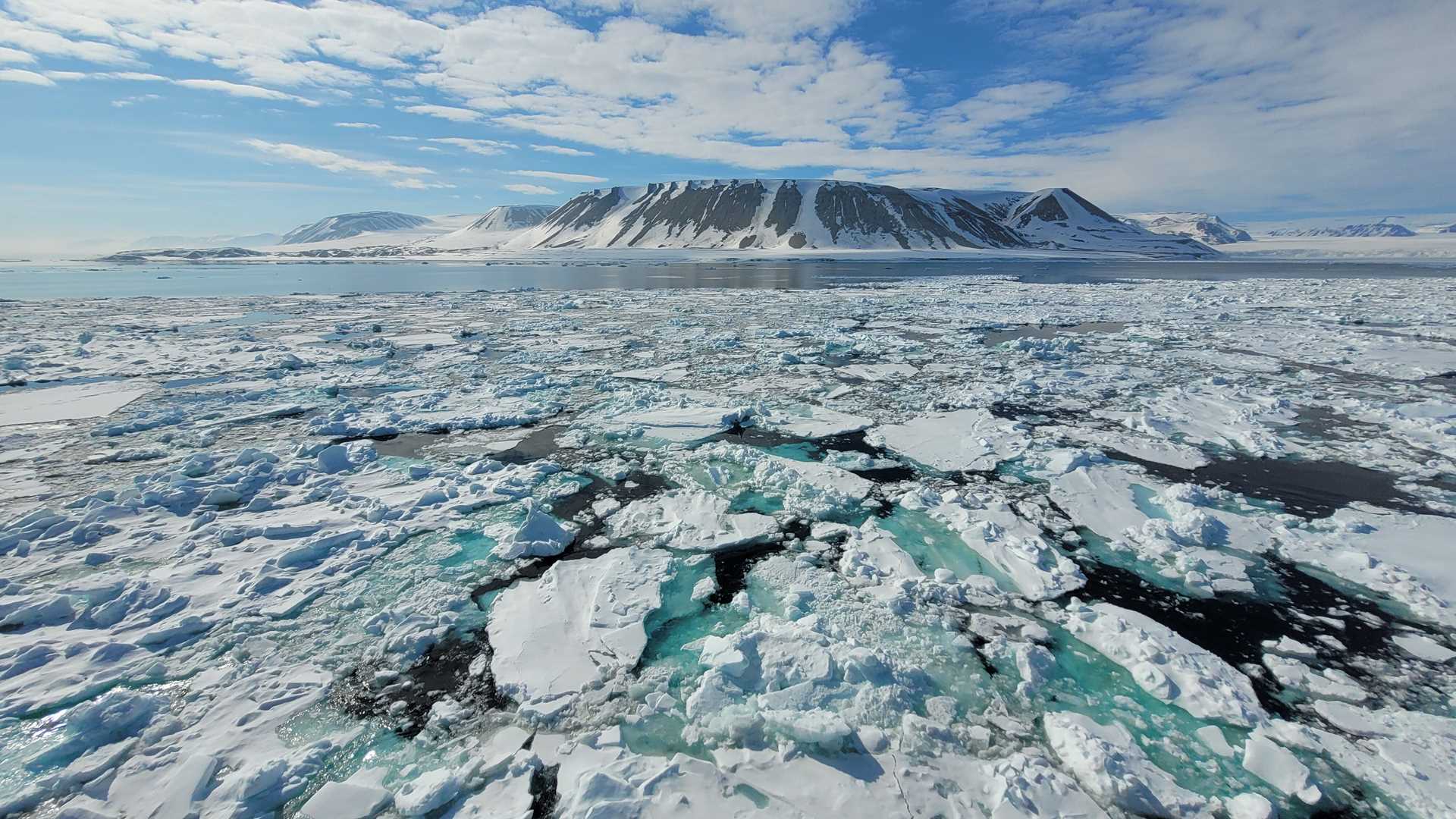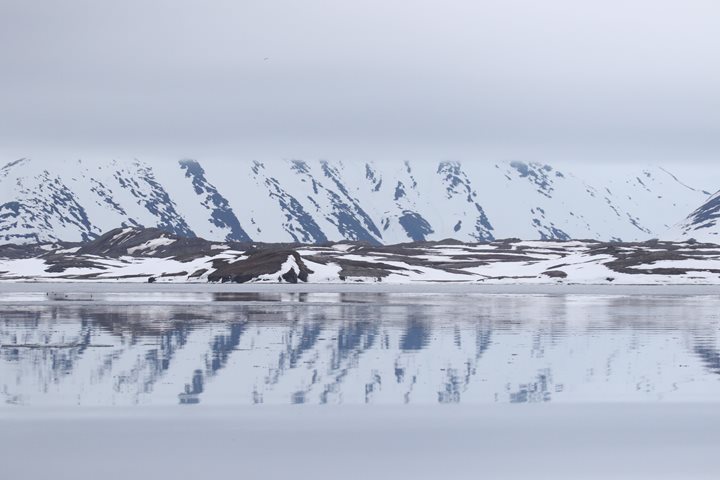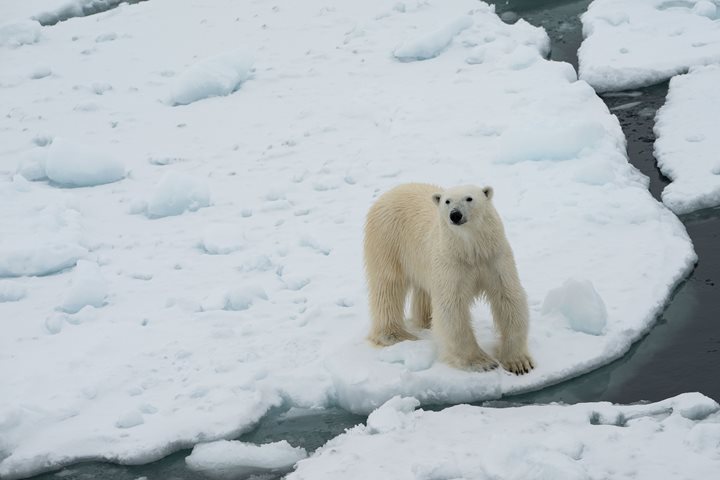As is very typical for operating expeditions in Svalbard, plans change based on many variables, which is exactly what happened this morning. With building winds offshore being driven by the massive icecap that covers Nordaustlandet, we had to abort our landing efforts at Agustabukta and set off in search of another adventure Svalbard was waiting to offer us. With near bluebird conditions and surrounded by stunning beauty in panoramic glory, we chose to seek out an area of the Hinlopen Strait where good ice conditions afforded us encounters with Svalbard’s most famous residents, polar bears. As fate would have it, we found 2 lone male polar bears out on the fast ice, sea ice held fast to the shore that is a critical habitat for the bears and their forage. It’s such a powerful experience to witness these magnificent rulers of the ice in their natural habitat, watching them from a distance in a “fly on the wall” fashion.
Our afternoon was spent kayaking and Zodiac cruising just north of Bjørnsundet in glass-calm conditions, observing walrus and bearded seals, and taking in the surroundings and Svalbard’s wild, pristine beauty.
6/10/2025
Read
National Geographic Resolution
Liefdefjorden, Northern Spitsbergen, Svalbard
National Geographic Resolution awakened in the calm embrace of Liefdefjorden, the fjord's surface as still and soft as a cottony mirror. Guests had the choice of exploring the serene waters by kayak or enjoying the breathtaking sight of tidewater glaciers during a Zodiac cruise. The reflections on the water were truly stunning, offering yet another rich and unique perspective on the magic of Svalbard. The air was alive with birdlife such as king eiders, long-tailed ducks, great skuas, and arctic terns circled above and settled on ancient moraines, adding life and sound to the Arctic stillness. For the adventurous, the legendary polar plunge was on offer, an exhilarating dive into the icy waters. Seven-year-old Tulia, full of spirit, even jumped several times alongside her father, Kimmo! After another epic lunch onboard, guests gathered for a disembarkation briefing followed by an inspiring lecture from National Geographic photographer Sergio Pitamitz, who shared stories from his ongoing work in visual storytelling. Later, once the relaxing wine and cheese teatime came to its end, a pod of white-beaked dolphins unexpectedly appeared, breaching near the ship and playfully, inviting the guests to the bridge, once again. Once the marine mammals left, delaying the start of the captain’s farewell cocktail, all guests and staff members enjoyed the emotional slideshow put together by Giulia Ciampini with all the pictures collected from our 14-day adventure.







